© ROOT-NATION.com - Use of content is permitted with a backlink.
The ASUS ZenScreen MB16AHG is a modern and technological portable monitor. Let’s get acquainted with it closer and at the same time learn about the niche of devices like portable monitors in general. Who needs them and for what purposes? What needs can they fulfill? Pricing, technologies, and fundamental differences from stationary displays. It is necessary to understand these matters primarily to think rationally about portable monitors. In our market, these devices are not the most common, but who knows, perhaps ZenScreen is exactly what you won’t be able to imagine your life without anymore.
Read also:
- Samsung Galaxy S24 Ultra Review: Strengths of AI and a Flawed Zoom
- Samsung One UI 6.1 Interface and Galaxy AI Features Review
Price and market positioning
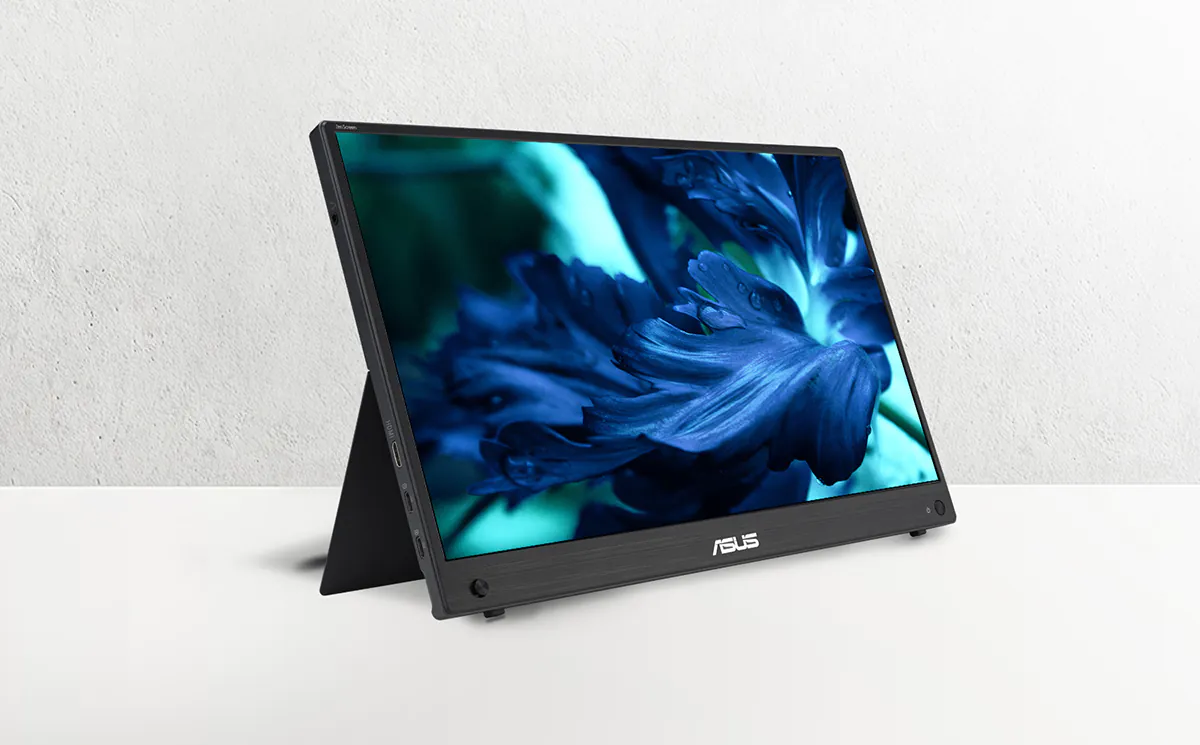
First and foremost, you notice the price of the device. It can be daunting – no joke, $420 for a 15.6″ Full HD monitor. And that’s expensive. Both compared to competitors and overall for a similar device. Immediately, there’s an association that for a similar amount, you could easily get yourself a great 2K monitor at 27″, but don’t rush to close the window! It’s important to understand that the MB16AHG is a niche product. There aren’t many devices like it on the market. But if you realize that you need a portable monitor, there’s nothing else to replace it with. Hence the pricing. Exclusivity and lack of mass production shape the value. It’s the laws of the market, and you can’t go against them.

All this lengthy preamble is precisely to prevent you from jumping to conclusions based on comparisons with traditional monitors. Let’s dig deeper, examine the ASUS ZenScreen from all angles. And perhaps, you’ll fall in love with it.
Specifications
- Diagonal: 15,6″
- Matrix: IPS
- Screen coating: glossy (anti-reflective)
- Screen resolution: 1920×1080
- Response time: 3 ms
- Refresh rate: 144 Hz
- Viewing angles: 178 degrees
- Brightness: 300 cd/m²
- Contrast ratio: 1200:1
- Color depth: 8 bits
- Color gamut sRGB: 100%
- Power consumption: 17 W
- Weight: 920 g
- Dimensions: 360×227×12 mm
Read also:
- Logitech MX Master 3S review: Logi’s flagship is still the best mouse in 2024
- KIVI KidsTV for children’s room review: Brick-style design, night light and protective glass
Application area
Well then, it’s time to delve into the realms of application for the ZenScreen MB16AHG and portable monitors in general. I’ve prepared a few usage scenarios that I personally find logical and interesting. Hopefully, this will help you determine the role of a portable monitor in your life.
Additional monitor
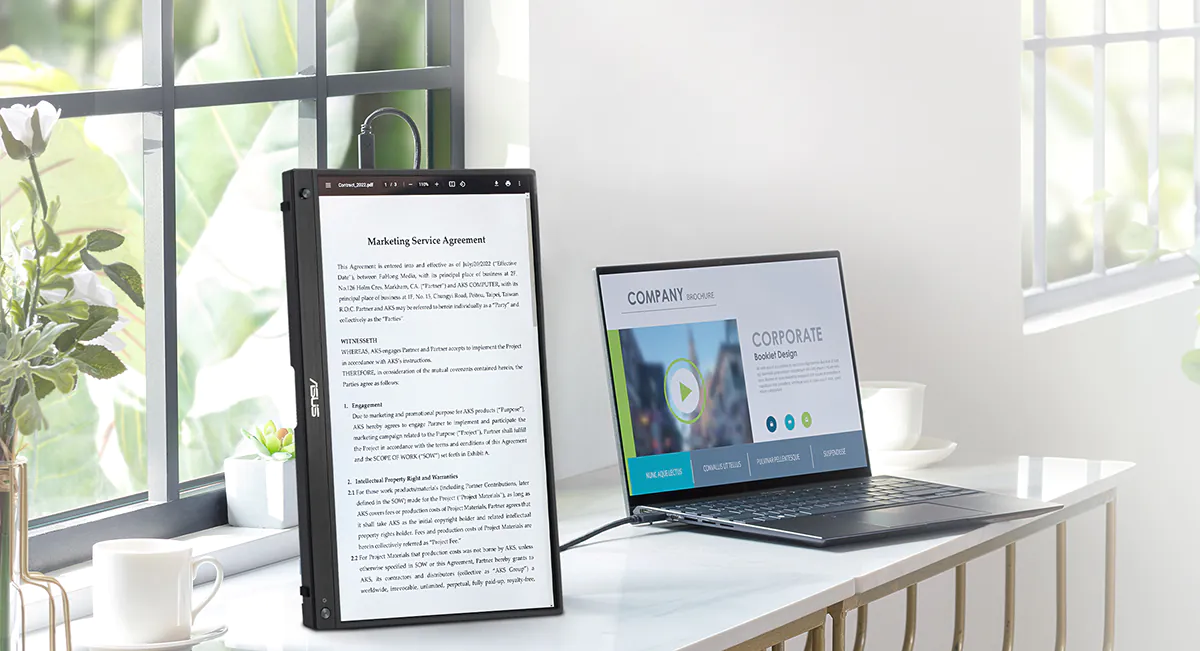
The main idea here is to expand the primary workspace. Imagine the ASUS ZenScreen neatly positioned on a tripod next to a large monitor. Why? If you’re a gamer, you can display hardware performance metrics on it. If you’re working with text or video, you can run a chat or music player on the additional monitor. For a designer, it’s a tool panel. A programmer would appreciate having a debugging screen on a small separate display. The logic is to have the necessary supplementary functionality visible and always at hand while you work. Those who have long embraced the zen of dual monitors will understand me. It’s just that a portable screen takes up much less space than another large display. And it looks more harmonious. Plus, with a laptop, you can quickly set up such a workspace with two monitors anywhere.
Monitor for presentations
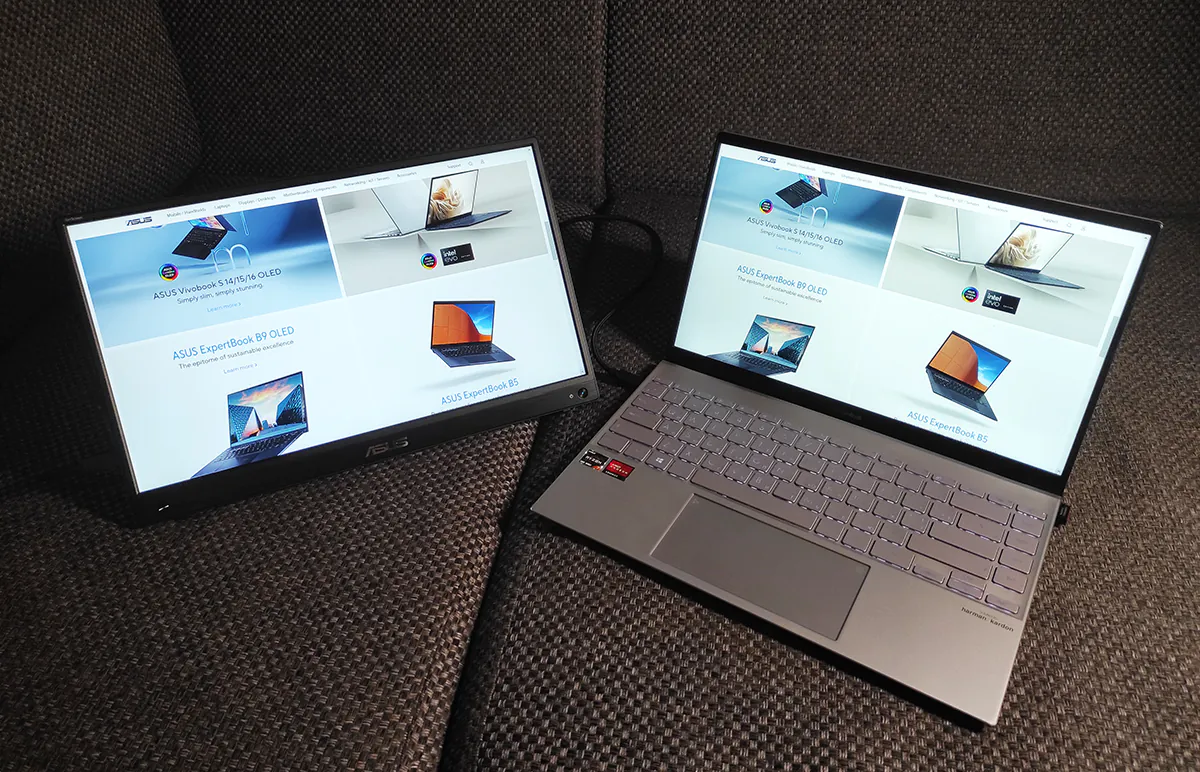
The next case will allow you to have a more professional and upscale appearance in the eyes of your clients. For example, you need to present your product, showcase a selection of photos, or discuss a project with a client. You arrive at a conference or café with your laptop, connect the ASUS ZenScreen MB16AHG, and display the necessary content on it. You work on the laptop while clients look at the portable display. You don’t have to huddle around one screen; instead, you can sit comfortably on different sides of the table. The presentation will look maximally elegant. And the convenience is top-notch. Once the presentation is finished, you can fold the screen into its case. It takes just two minutes, but in the eyes of your clients, you’ll look like a hundred percent professional!
Gaming monitor
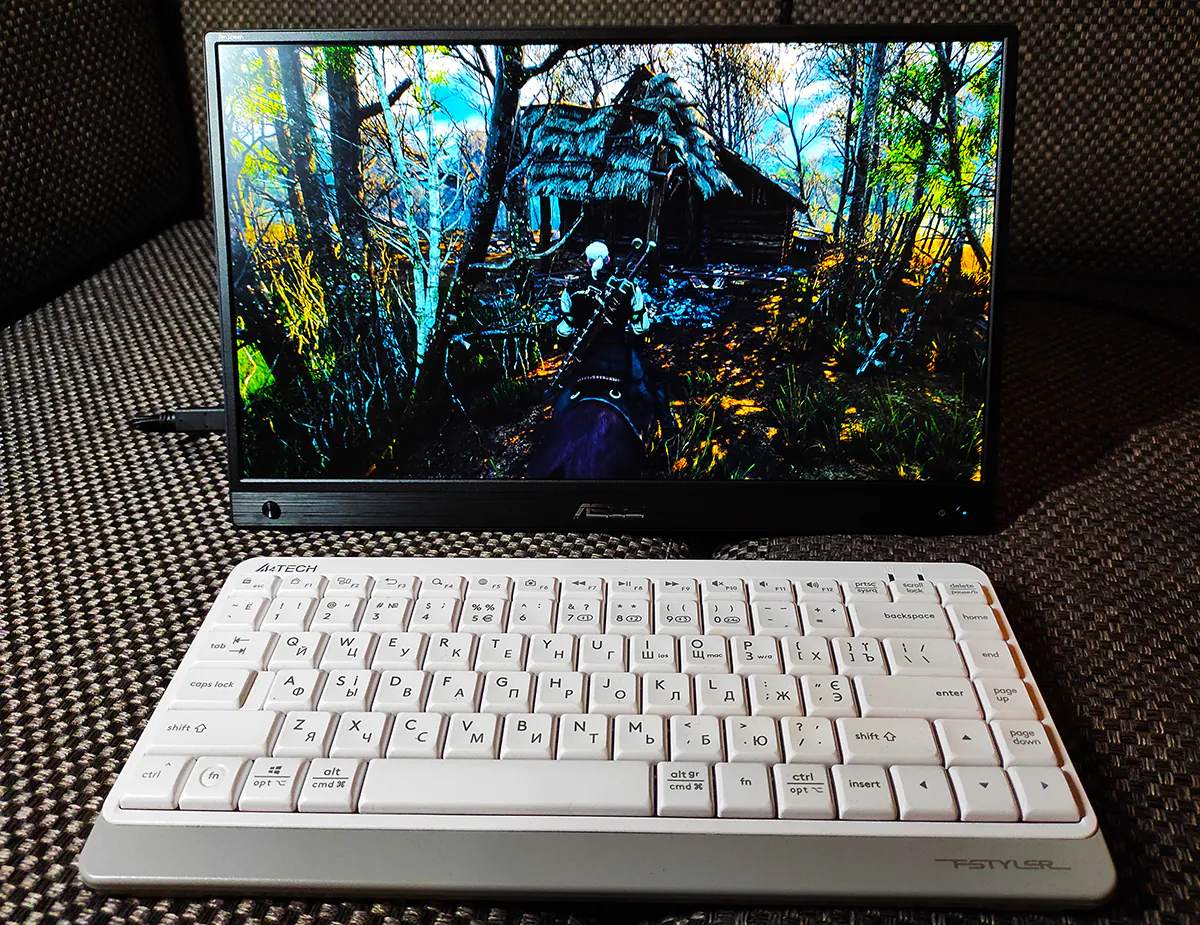
A fascinating use case for the ZenScreen can be as a gaming monitor. And I’m not talking about connecting it to a laptop or PC. Its niche is portable gaming consoles. Want to pass the time with maximum comfort? Connect your ZenScreen to the ROG Ally and immerse yourself in the gaming world completely! Flagship smartphones also support video transmission via USB. Whether you’re outdoors, visiting friends, or wherever you find it convenient, having the ZenScreen MB16AHG at hand means watching movies and playing games on a large (compared to a smartphone) screen is just a matter of minutes. Plus, you can interactively spend time with friends. After all, with two displays, you can easily play casual games, turn-based strategies, and battleships.
Package contents
If my arguments for using the ASUS ZenScreen MB16AHG have piqued your interest, I suggest getting to know the monitor more closely. I’ll start, as it should be, with the contents of the package. After all, it’s always interesting to see what accessories the manufacturer has equipped their device with. Here are all the accessories I found in the box.
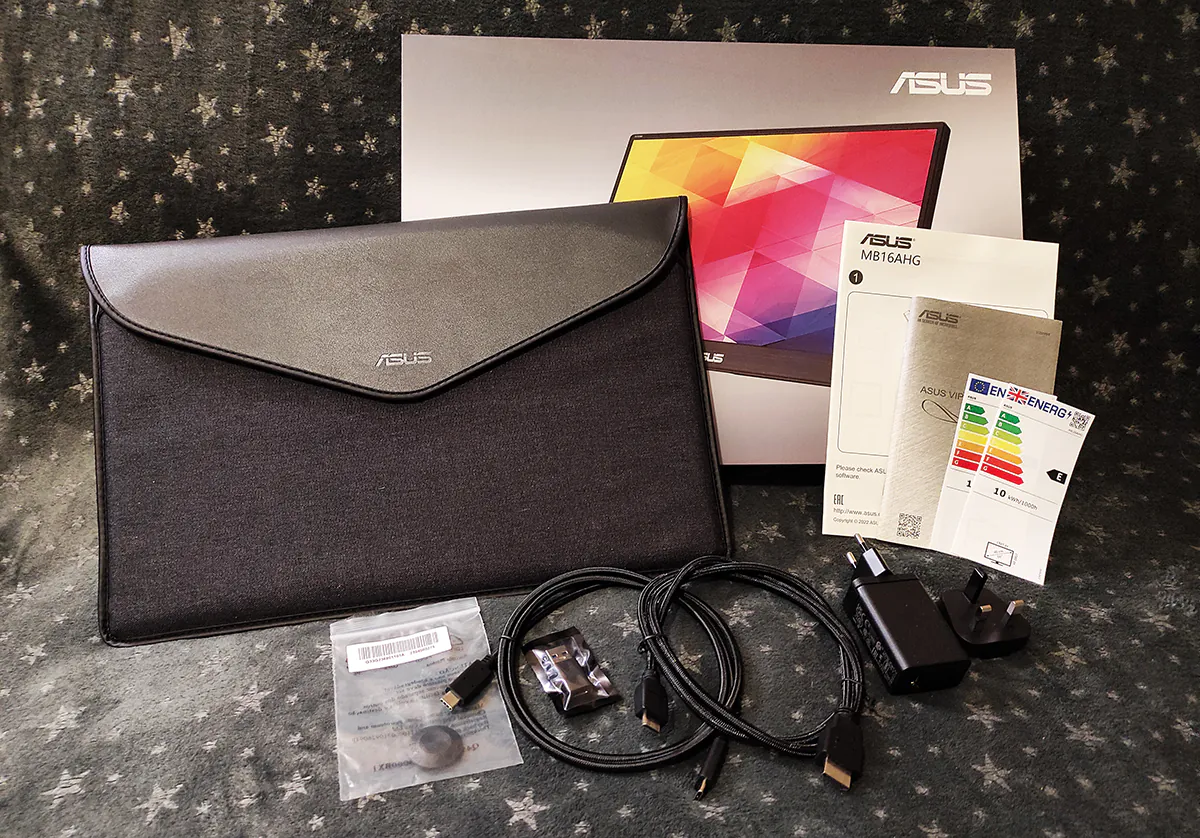
Now I’ll tell you more details. And I’ll start with the power supply unit. It’s neat and compact, won’t take up much space in a backpack. The output power is 18 watts, which is just optimal for the monitor (the MB16AHG consumes 17 watts). The power adapter is equipped with interchangeable European and Asian plugs, which can be replaced in a few seconds without any effort. There’s a standard USB port built into the adapter, and that’s great! Because now you can charge your smartphone from the monitor’s power supply. Supported modes are 5V at 2A and 9V at 2A, classic. The ZenScreen can also be easily powered by any modern smartphone charger.
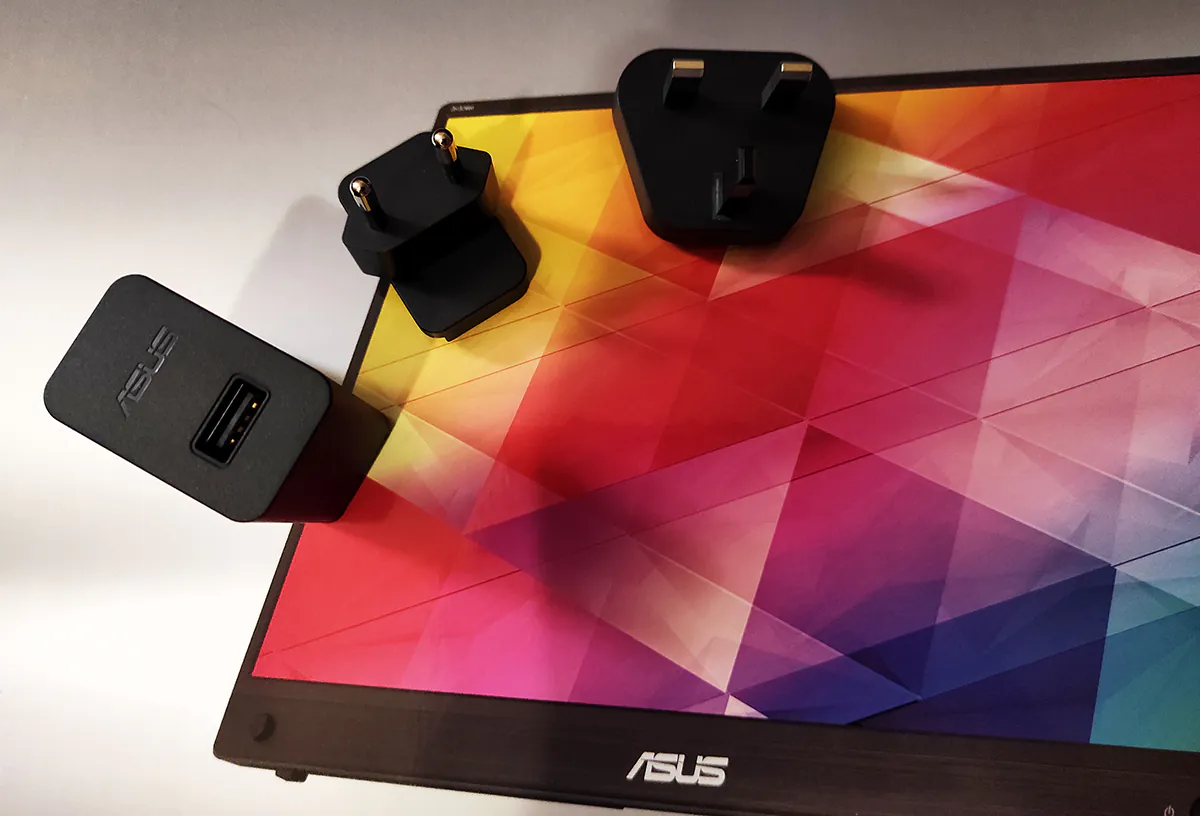
In the package, there were also two good cables. A Type-C to Type-C cable and an HDMI to mini-HDMI cable. Both cables are of high quality, with cool fabric braiding. Any cable is suitable for image transmission, as the ASUS ZenScreen MB16AHG can display video via the USB Type-C port. And if your laptop also supports this feature, both power and picture will be transmitted through just one wire, which is great!
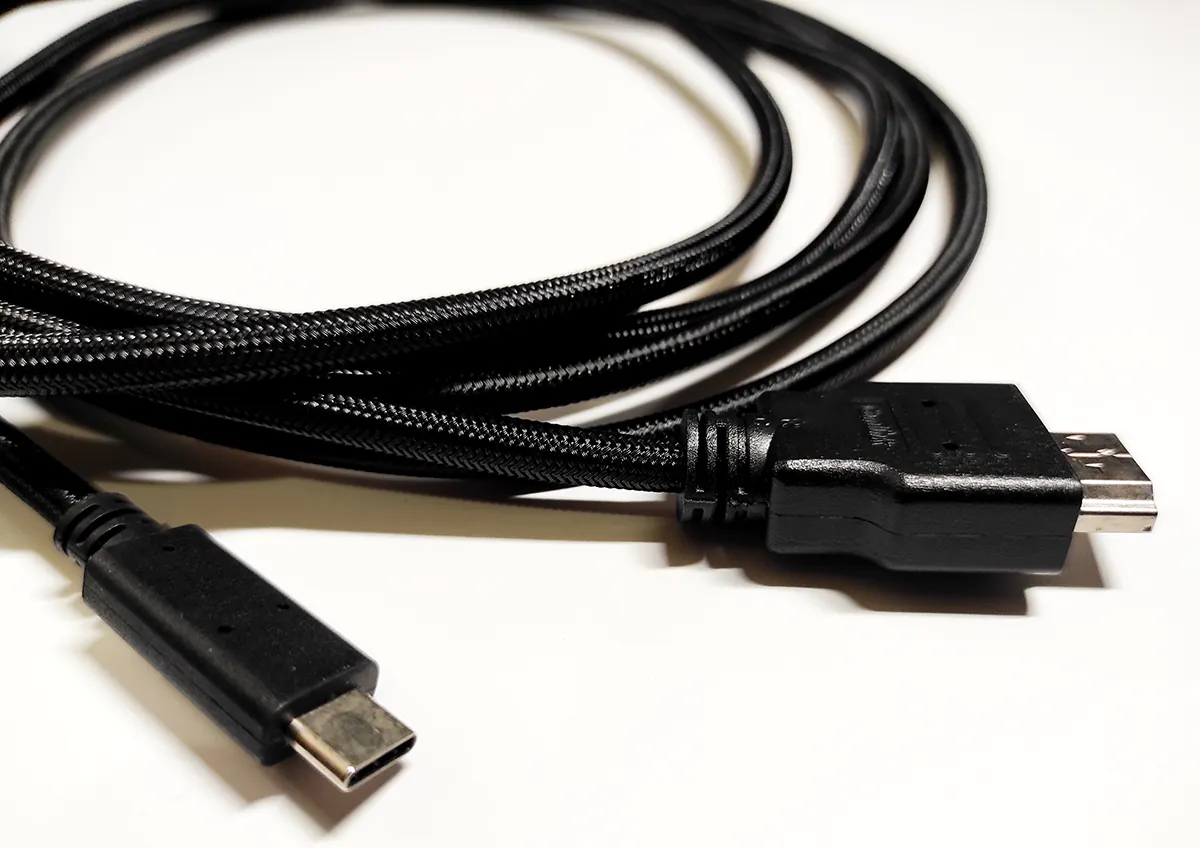
In case your hardware doesn’t support video streaming via USB, there’s an adapter included in the package from classic USB to Type-C. You can connect it to the power adapter and use it with the standard cable to operate the device. Then, you can transmit the image via HDMI.
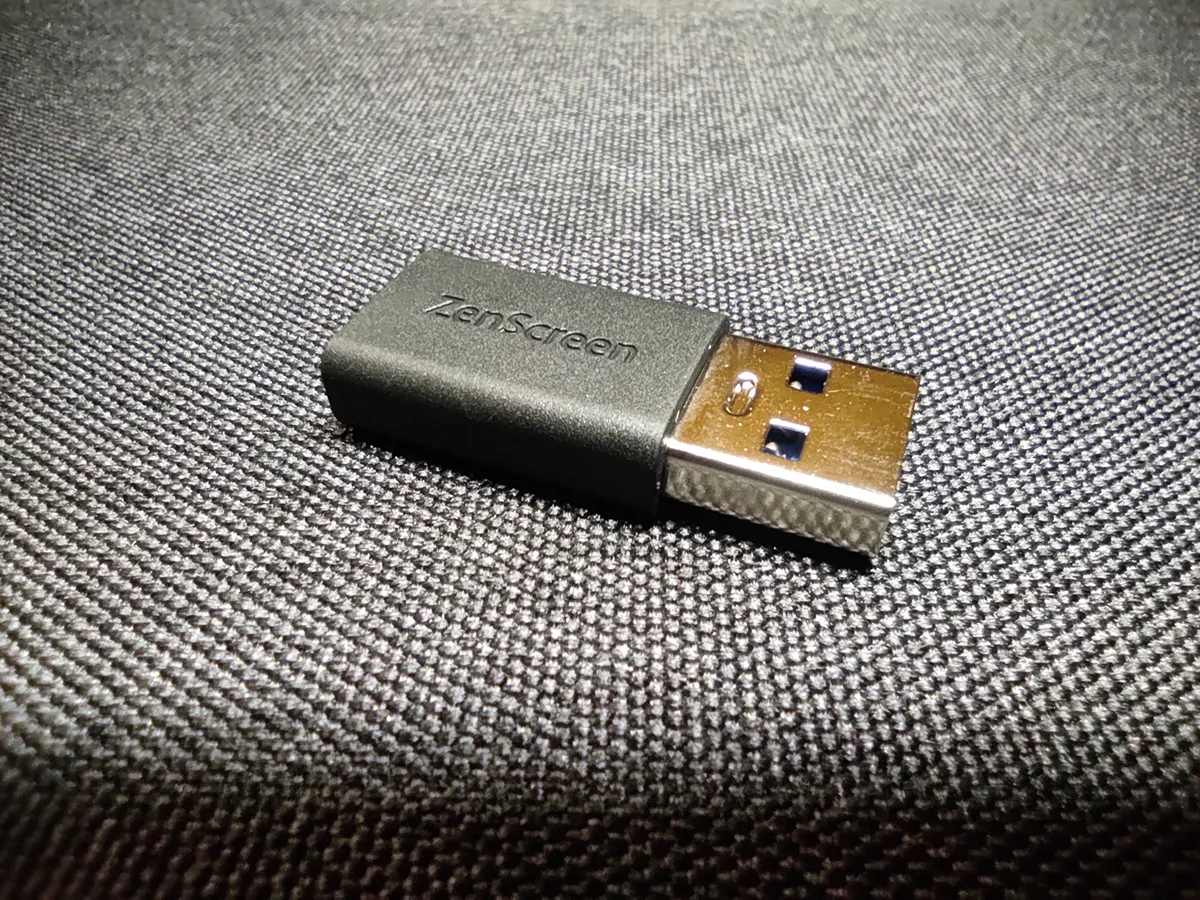
The package includes a warranty card and a short user manual. From the latter, you can learn about the ports and controls of the device. Everything is very concise, although it’s not a motherboard with a plethora of interfaces.
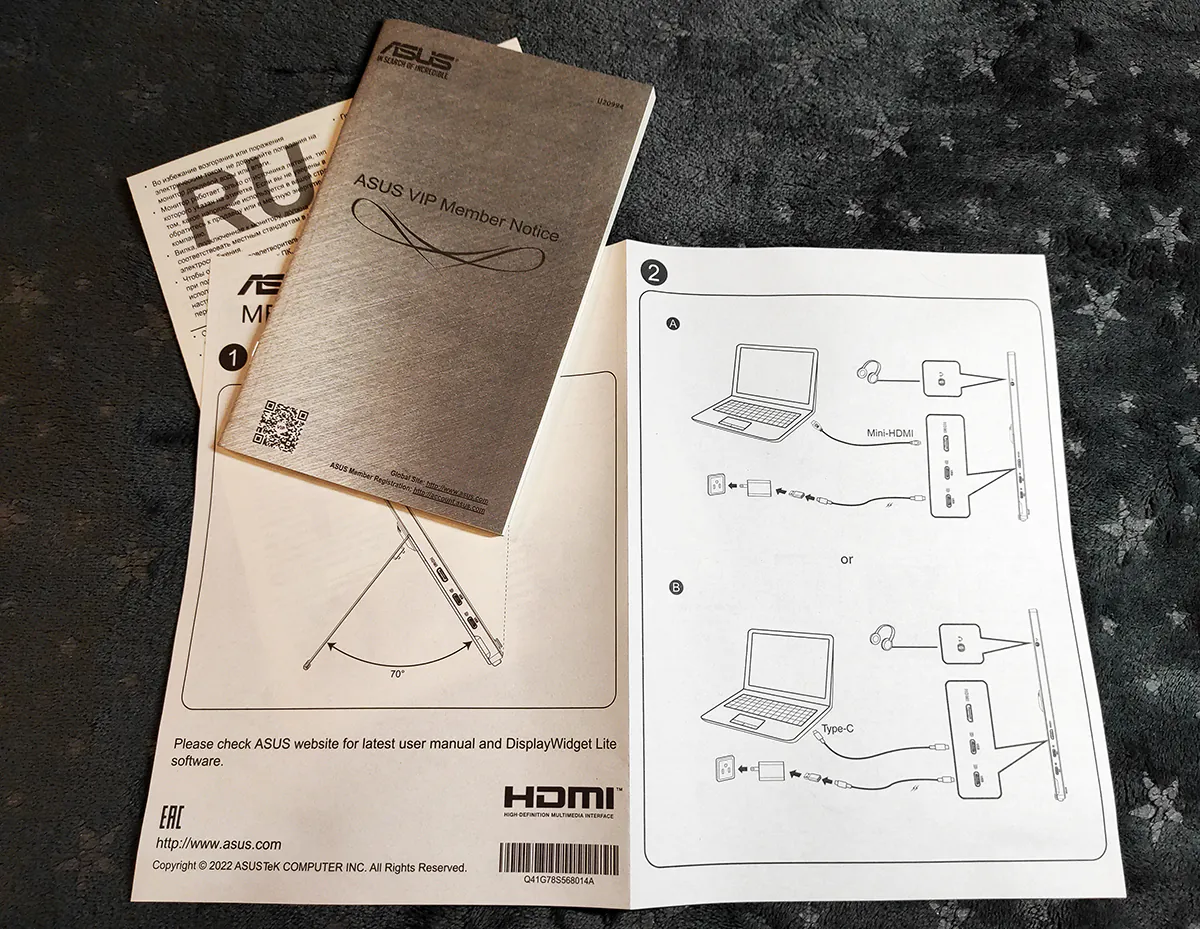
And this is simply a cover for the threaded hole for the tripod. To ensure everything looks aesthetically pleasing.
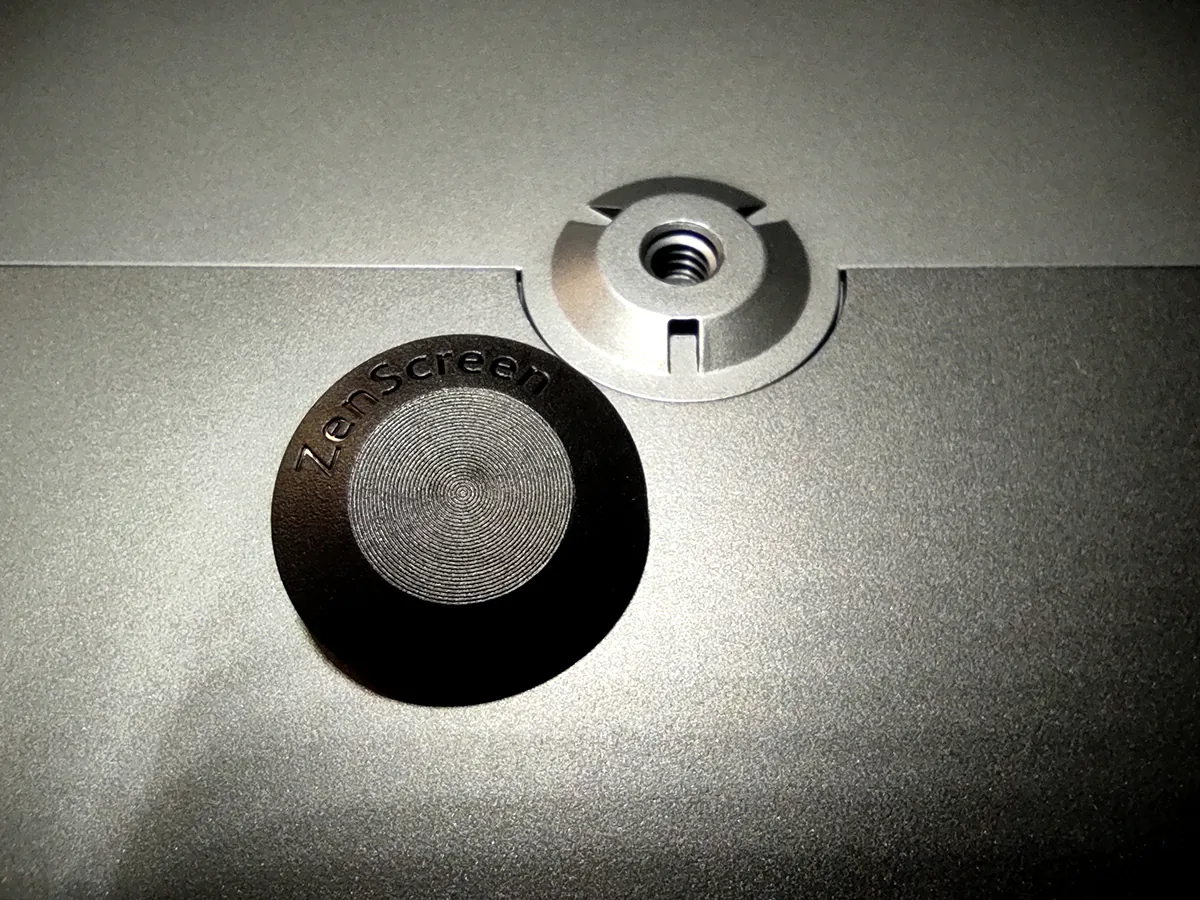
ASUS also took care of our convenience by providing the MB16AHG with a nice case. It’s sleek, without anything extra. Pleasant fabric on the outside and soft padding inside. Perhaps the only thing missing is pockets for the cable and power adapter. But these are design components.

Read also:
- Review of Lenovo Legion Glasses: glasses – a pocket monitor for gaming and more
- Review of Lenovo Legion Go: Portable Gaming Console-Transformer
Features and design
Starting my acquaintance with the ASUS ZenScreen, the first thing I noticed was its weight. The monitor is very lightweight, less than 1 kg, and the thickness is only 12 mm. The display casing is plastic, but it feels nice. By the way, it’s practically fingerprint-resistant. Unlike the screen itself. Fingerprints collect quite well on the glossy screen. Although it’s not a touchscreen, so there’s no need to touch the screen.
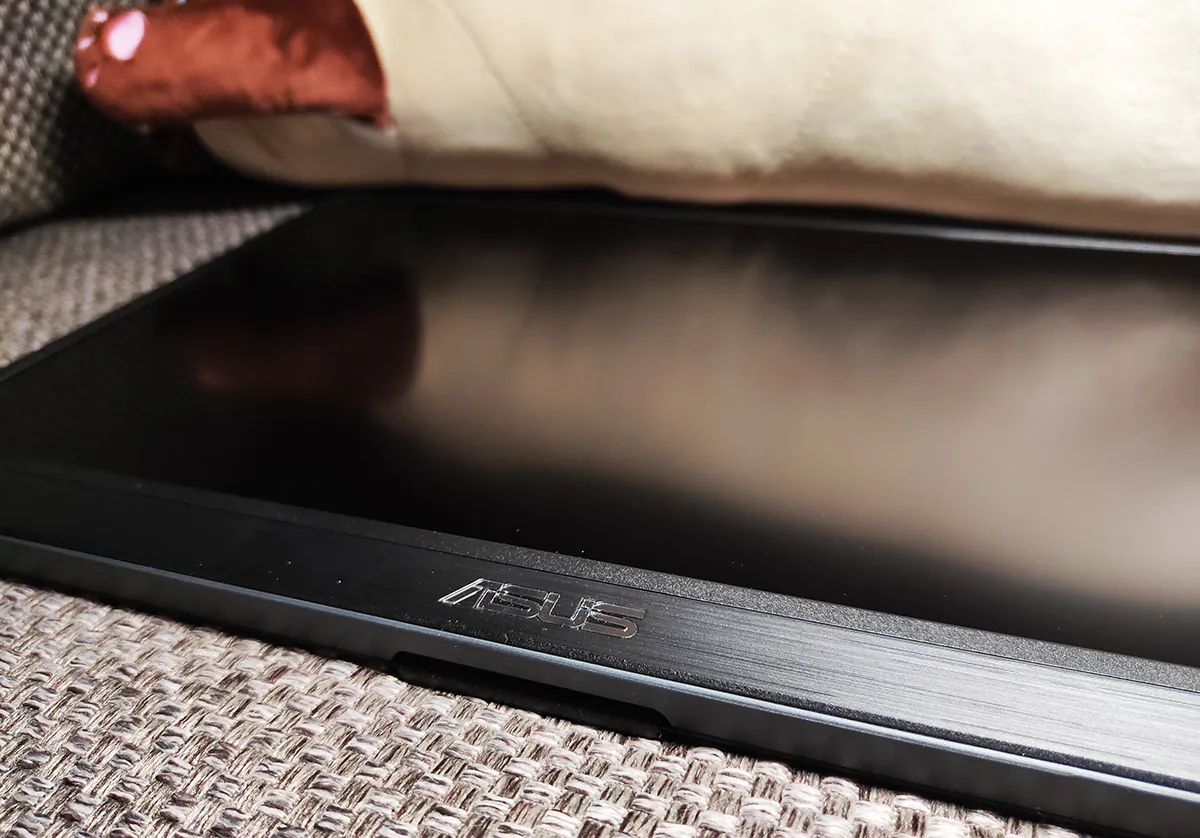
I’ll immediately mention the methods of installing the monitor. It can either be mounted on a tripod or placed on a table using the flip-out stand. Thanks to the rubber pads, the ZenScreen MB16AHG stands quite securely on any surface. And the angle at which the monitor is positioned is quite well balanced – no discomfort. By partially opening the back cover, this angle can be adjusted, although there are no fixed positions.
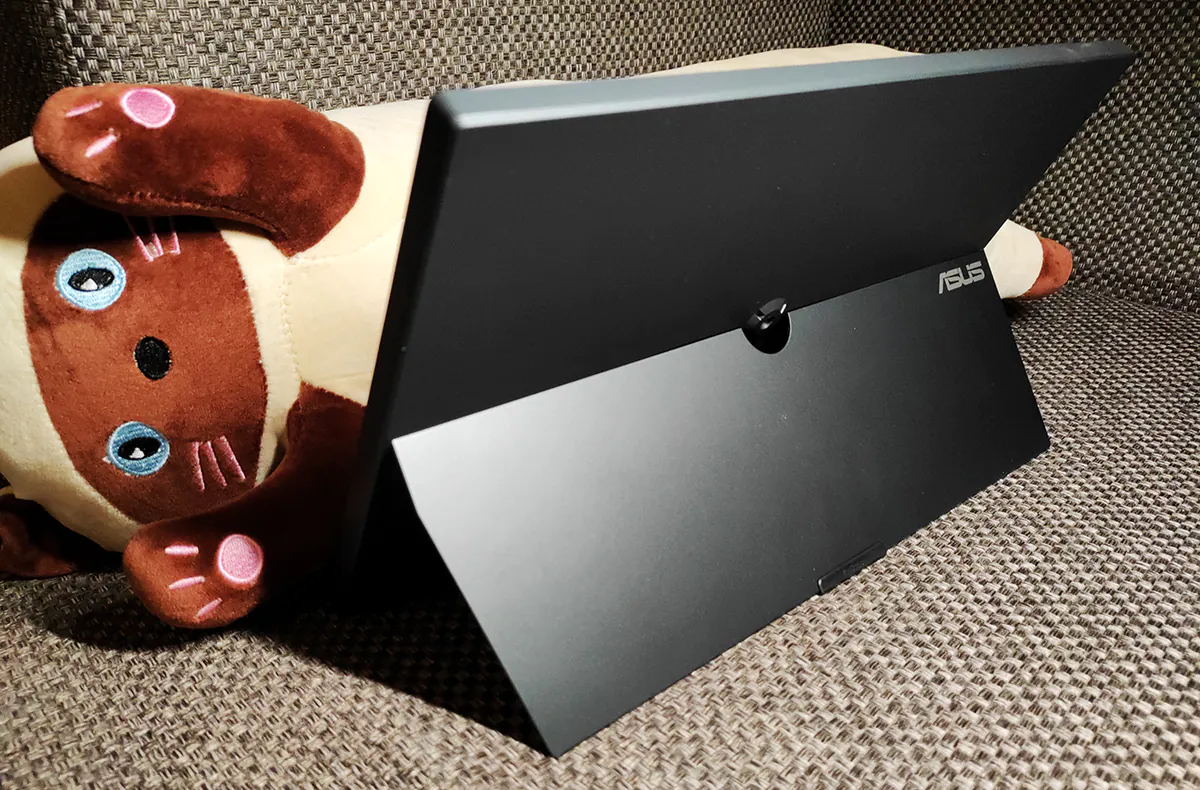
All the controls on the monitor are within reach – on the front side. The power button is on the right, and the menu joystick is on the left. The necessary ports are located on the left side of the device: headphone jack, mini-HDMI, and two USB Type-C ports with DisplayPort support. They didn’t skimp on ports, which is commendable. The only thing missing is perhaps Wi-Fi for wireless video transmission. That would be beyond praise. However, such functionality is present in the MB16AWP model.
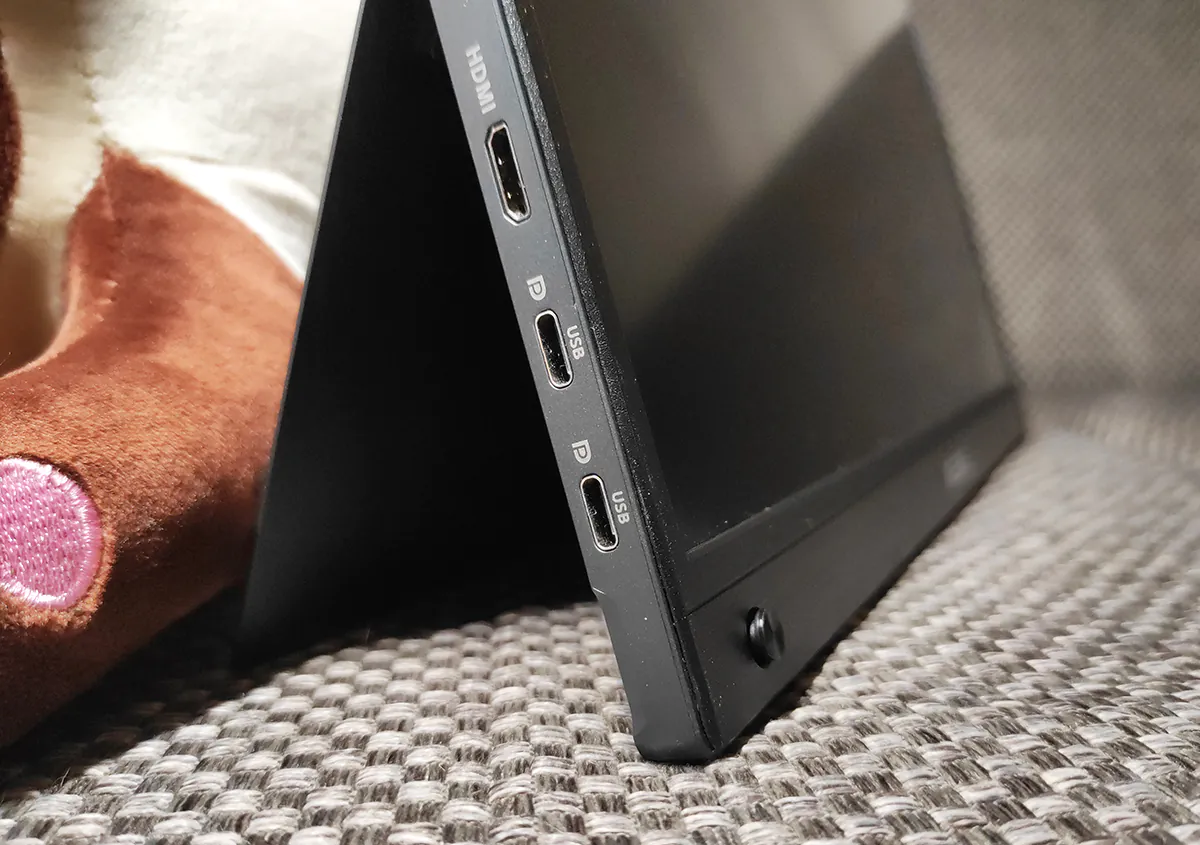
Screen technologies and features
What makes the monitor unique are its technologies. A regular display can become a true multimedia powerhouse if equipped with modern interfaces and a quality panel. Full color coverage, refresh rate, and pixel density – these are the things that enhance display quality, give you a pleasant working experience, and reduce eye strain. The ASUS ZenScreen MB16AHG can boast truly noteworthy features that place it in the premium technology segment.
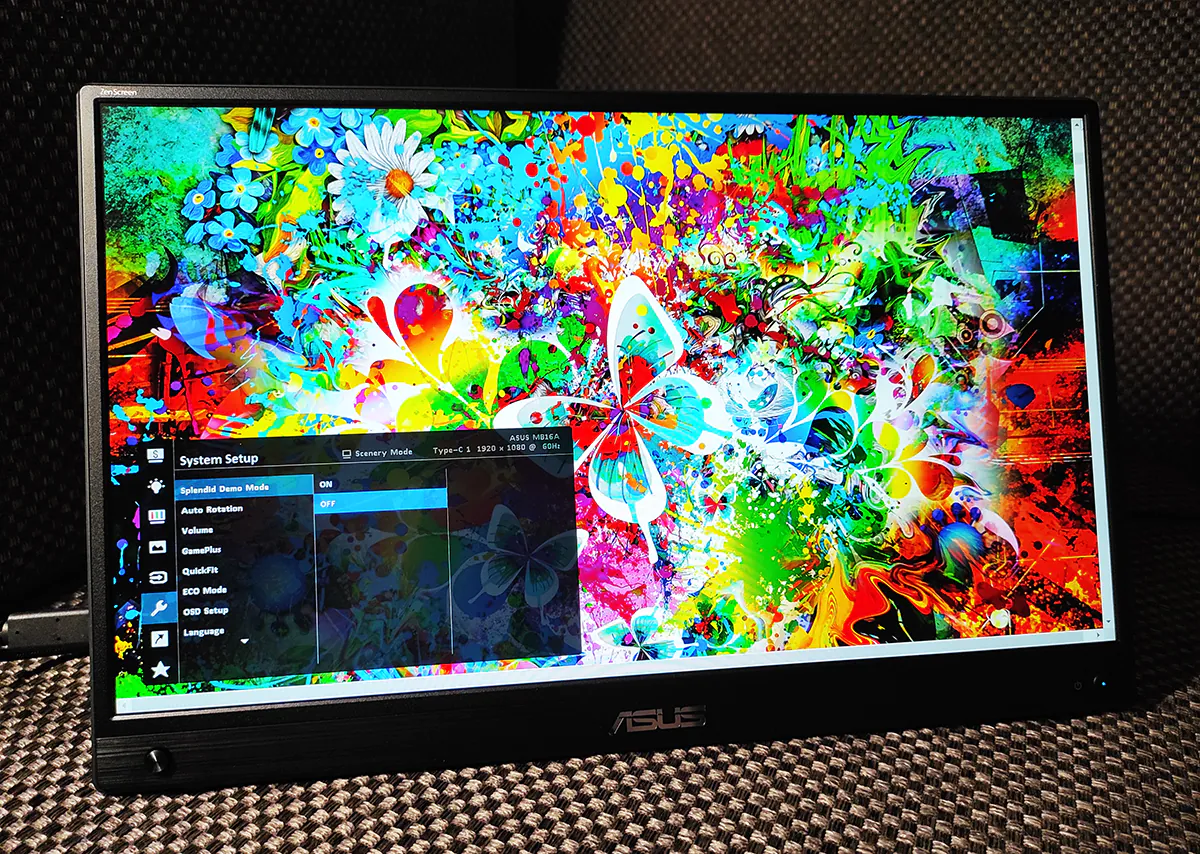
Thanks to the superb IPS panel, the image on the display is bright, vibrant, and equally visible from practically any viewing angle. The refresh rate is outstanding – 144 Hz. ASUS’s proprietary achievement, FreeSync Premium, allows adjusting it for the dynamicity of the displayed scene. The manufacturer also took care of your eyes. With the ASUS Eye Care feature, harmful blue light is filtered out. Now working in low light conditions is a pleasure.

ASUS Flicker-Free technology eliminates screen flickering altogether. And although an IPS panel with a response time of 3 ms is generally not prone to flickering, with ASUS’s proprietary technologies, you won’t notice them anywhere under any circumstances.

Read also:
- APNX AP1-V ARGB CPU Cooler Review: Elegant and Efficient
- Cougar Combat Mouse and Keyboard Set Review
Conclusions
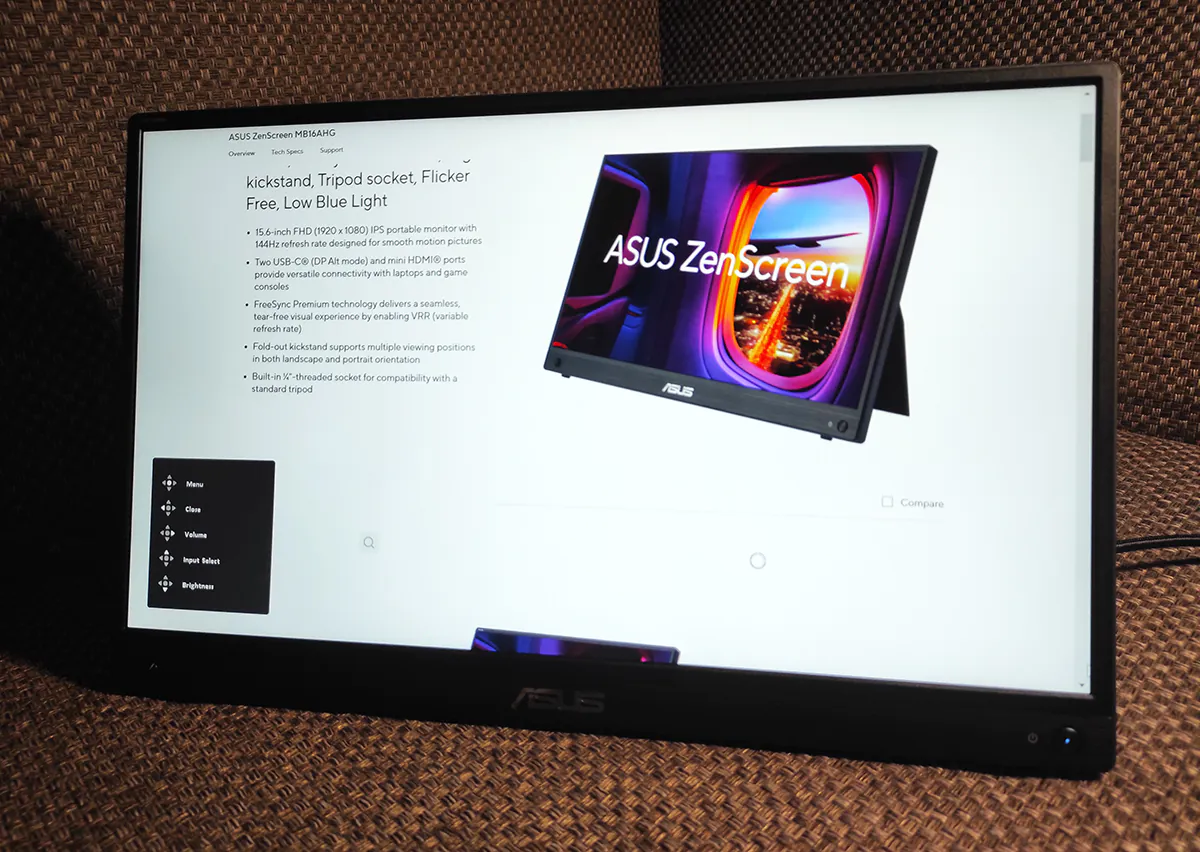
The ASUS ZenScreen MB16AHG is an excellent monitor. Yes, it’s not necessary for everyone, but it’s worth trying, and it will become indispensable for you. High-quality, technological, modern, and functional – that’s how it seemed to me, and that’s how it turned out in practice. You just have to want it, and the usage scenarios emerge as something obvious. Overall, the concept of portable monitors resonated with me. The only question is the price, but that’s a secondary matter.
Read also:


